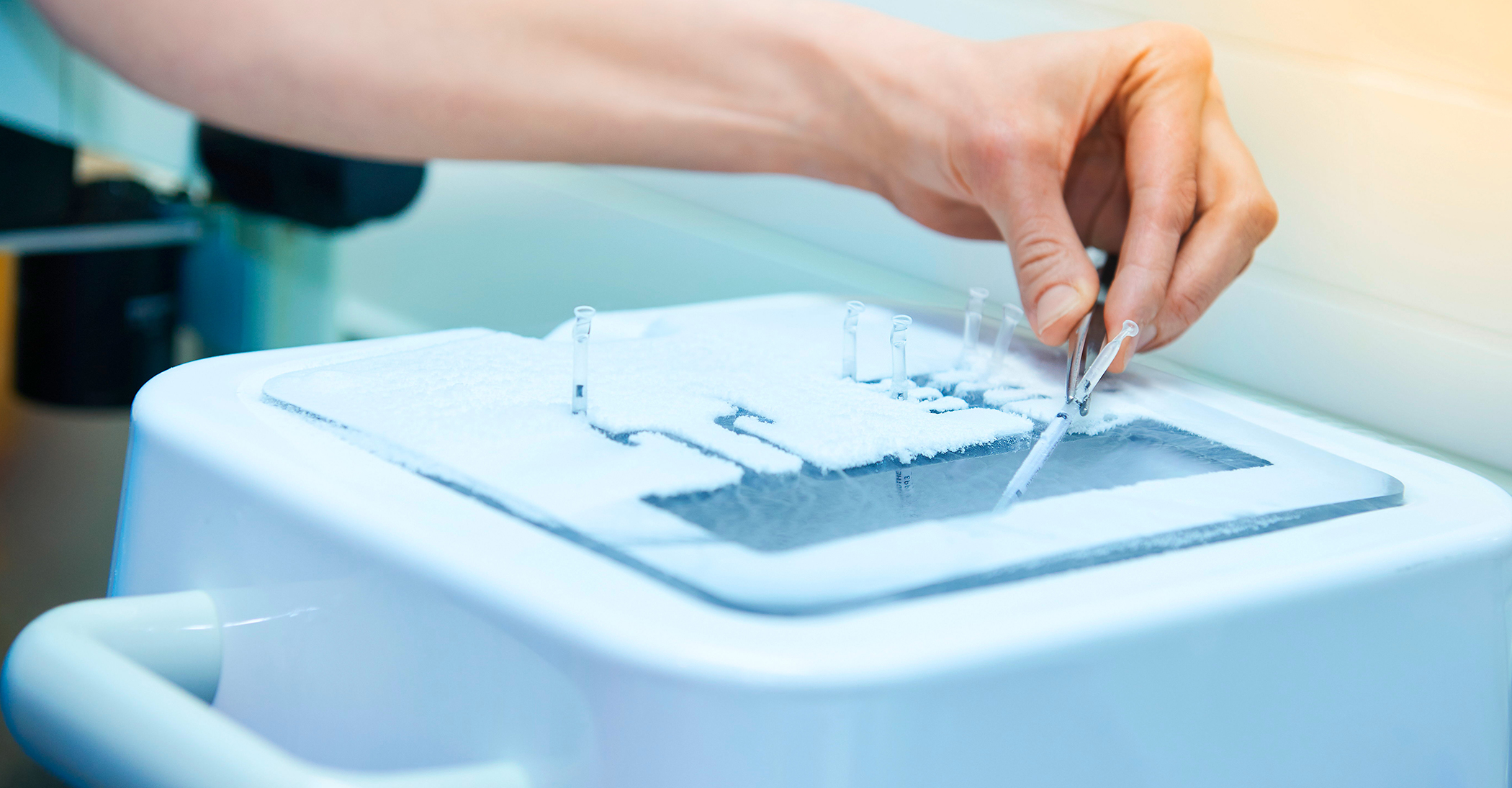Freezing of fertilised egg cells from IVF/ICSI treatment
Freezing (cryopreservation)
The freezing method that is most commonly used today is often referred to as vitrification.
Cryopreservation by vitrification
Surplus fertilised eggs at the pro-nucleus stage of development and embryos in the blastocyst stage can be frozen to make them available indefinitely for further transfers later.
During IVF or IVF-ICSI treatment, more fertilised eggs than needed are often produced at the pro-nucleus stage. Cryopreservation is therefore an extremely useful supplementary treatment, as it allows further transfers to be made at some future point without the need to undergo further stimulation treatment.
Cryopreservation options
In addition to cryopreservation of fertilised egg cells and embryos, it is also possible to freeze the following:
- Testicular tissue (using the TESE technique)
- Sperm
- Unfertilised egg cells, in order to start a family at some later stage
The costs associated with cryopreservation treatment and for later embryo transfers are not covered under German health insurance policies.

